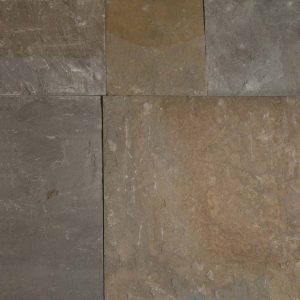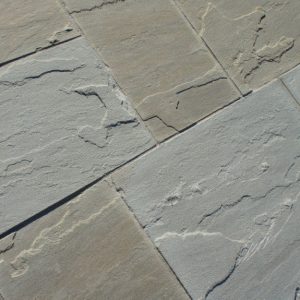Pennsylvania Bluestone is a layered sandstone found only in the northeastern tier of Pennsylvania, parts of northern New Jersey and the southern tier of New York. The quarried product has many uses, from cut dimensional stone used in patios, walkways and stair treads to architectural stone used in buildings. It is also used for wallstone, decorative boulders, natural steps and other landscape features. The name Pennsylvania Bluestone is due to its predominantly blue color and because the majority of stone is quarried in Pennsylvania; it can, however, appear in many other hues besides blue. It was formed over 360,000,000 years ago during the Devonian Period as large inland seas deposited sand in the Catskill delta region. It is composed of feldspar, sand, and mica (among other minerals) and is clear of most organic residues.
The commercial refinishing process for bluestone cut slabs is called spalling. This process incorporates water and heat to reveal the natural layers of the stone as it was deposited originally. The cutting orientation must be almost exactly along the horizontal layers. The cut slab surface is soaked with water and heated rapidly with a wide nozzle propane torch, breaking off chips of stone along their natural fault lines. The spalled slabs are called Pennsylvania River Rock or variations of this name depending on the market or origin of the stone.
If the initial deposit was made under slow moving water the ripples of the water action on the sand or mud will be revealed. This deposition process may be seen today at any ocean beach in shallow water or in a stream bed where conditions allow it to be observed.
From Wikipedia


